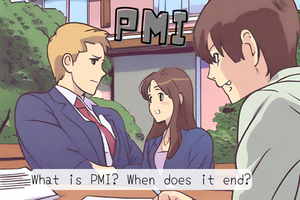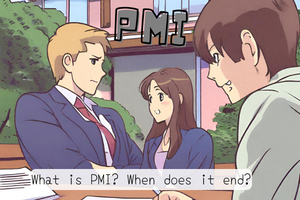Understanding PMI: What You Need to Know About Private Mortgage Insurance
Understanding PMI: What You Need to Know About Private Mortgage Insurance. Private Mortgage Insurance (PMI) is a topic that often comes up when discussing home buying and financing. In this blog post, we will explore what PMI is, why it is required, and how it can impact your mortgage payments. PMI, or private mortgage insurance, is typically required by lenders when buyers are putting down less than 20 percent of the home’s purchase price. This insurance protects the lender in case the borrower defaults on the loan. It allows individuals without enough cash for a 20 percent down payment to still be able to purchase a home. Most buyers choose to include the cost of PMI in their monthly mortgage payments. However, some buyers may opt to pay it upfront instead. If you have the funds to pay upfront, you can also consider putting more money towards your down payment or exploring an 80-10-10 loan structure.
Understanding PMI: Factors Affecting Cost and Options for Elimination
With these options, your PMI payments will automatically end once you have 20 percent equity in your home. It’s important to note that FHA loans have a different type of mortgage insurance that cannot be removed. With FHA loans, the mortgage insurance is typically paid throughout the life of the loan. Several factors can affect the cost of PMI. These include the size of your down payment, your credit score, the type of property you are purchasing, the length of your loan, and the number of borrowers on the loan. Generally, PMI rates are lowest when you put 15 percent down, higher with 10 percent down, and highest with 3 percent down. Additionally, a higher credit score can result in lower PMI rates. PMI is also typically lower for primary residences compared to second homes or investment properties. If there are multiple borrowers on the loan, the PMI rate may be reduced as well. If you want to save money on your mortgage payments, you may consider refinancing when interest rates are low.
Strategies for Managing PMI: Refinancing and Loan Length

Refinancing can help you secure a lower interest rate and potentially eliminate the need for PMI if you have enough equity in your home. Another strategy to manage PMI is to shorten the length of your loan. For example, if you originally took out a 30-year loan, you could refinance to a 20-year loan. By doing so, you can pay off your mortgage faster and eliminate PMI sooner. To determine the best approach for managing PMI, it is recommended to speak with a mortgage specialist or loan officer. They can assess your specific situation and provide guidance on the various scenarios available to you. In conclusion, PMI is an insurance that lenders require when buyers put down less than 20 percent of the home’s purchase price. It can be included in your monthly mortgage payments or paid upfront. Factors such as down payment size, credit score, property type, loan length, and number of borrowers can impact the cost of PMI.
Mastering PMI: Strategies to Save on Mortgage Payments
By understanding these factors and exploring different strategies, you can effectively manage PMI and potentially save money on your mortgage payments. Thank you for reading this blog post on PMI. Have a great day, stay safe, and keep smiling!

Chesmar Homes Triumphs with Eliant Award for Outstanding Homebuyer Experience
Chesmar Homes has been honored with the Eliant Award, recognizing their superior customer service and homebuyer satisfaction. This accolade underscores Chesmar’s dedication to excellence in homebuilding, highlighting their commitment to creating exceptional living experiences.

What is PMI and How Do You Get Rid of It?
Understanding PMI: What You Need to Know About Private Mortgage Insurance Understanding PMI: What You Need to Know About Private Mortgage Insurance. Private Mortgage Insurance

Edison Home Plan Video Tour
Edison Home Plan Video Tour 1 Story, 1910 Square Foot Plan, 3 Bedrooms, Flex Room & 2 Baths https://newhomeknowitall.com/wp-content/uploads/2023/10/Edison-Plan-At-Sunterra-Texas.mp4 Find My Home
Your New Home Journey to Discovering New Construction Homes
Find My New Home Your New Home Journey to Discovering New Construction Homes We understand the journey you’re on. It’s a journey filled with excitement,

Crafting Dreams: Explore the Elegance of Ashton Woods Homes – Your Path to New Home Bliss
Their approach is grounded in collaboration, ensuring that each homeowner’s vision is woven into the very fabric of the home’s design. With a wide array of customizable options, from finishes to layouts, Ashton Woods empowers you to transform a house into a haven that resonates with your unique identity.

